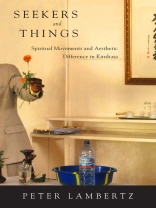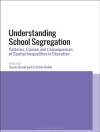Focusing on the intricate presence of a Japanese new religion (Sekai Kyûseikyô) in the densely populated and primarily Christian environment of Kinshasa (DR Congo), this ethnographic study offers a practitioner-orientated perspective to create a localized picture of religious globalization. Guided by an aesthetic approach to religion, the study moves beyond a focus limited to text and offers insights into the role of religious objects, spiritual technologies and aesthetic repertoires in the production and politics of difference. The boundaries between non-Christian religious minorities and the largely Christian public sphere involve fears and suspicion of ‘magic’ and ‘occult sciences’.
สารบัญ
List of Illustrations
Acknowledgements
Introduction
Chapter 1. ‘Light in the Darkness’: Towards a Congolese Spiritual Movement ‘from Japan’
Chapter 2. Occult Sciences: (il)legitimate Secrecy and the Infrapolitics of Suspicion
Chapter 3. Blossoming Boundaries: (Re-)production and Contestation of Japanese Flower Practices
Chapter 4. Cleansing the City: Touch, Rubbish and Citizenship
Chapter 5. Experiencing Faith: Crisis, Miracles and Spiritual Healing
Chapter 6. (In) Touch without Contact: Johrei and the Aura of the Self
Chapter 7. Vibrating Words: Performative Silence and the Power of Words
Chapter 8. Imported Tradition: ‘Ancestor Worship’ as Reverse Orientalism
Conclusion
Bibliography
Index
เกี่ยวกับผู้แต่ง
Peter Lambertz is a post-doc fellow at the German Historical Institute (Paris) and the Centre des recherches sur les politiques sociales in Dakar. He holds a joint Ph D from the universities of Utrecht and Leipzig (Religious Studies/African Studies) and has been teaching at the Philosophat Edith Stein in Kisangani.












